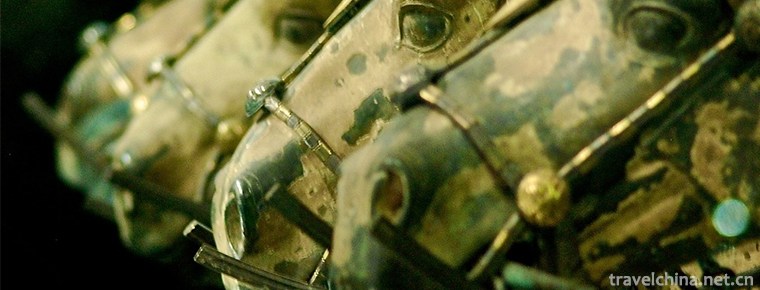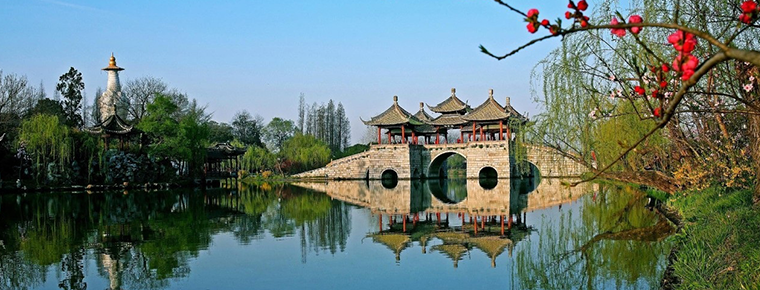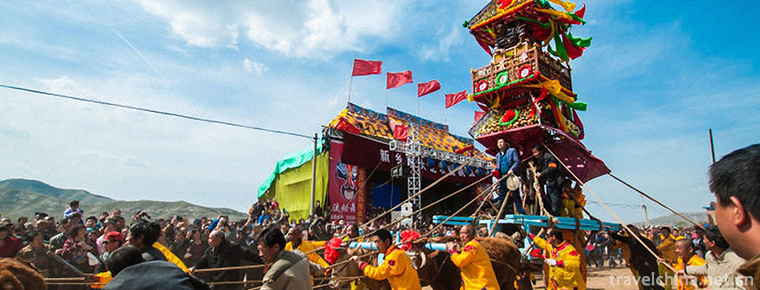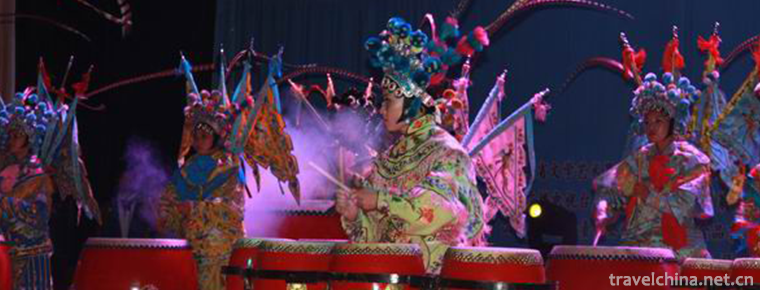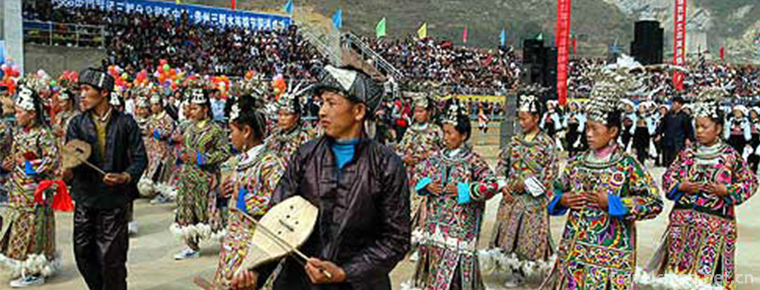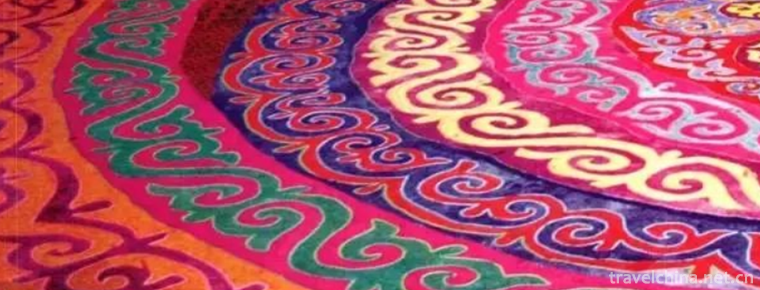Fire tiger
Fire tiger
Fire tiger is a traditional folk dance form spread in Fengtai, Anhui Province. One of its greatest characteristics is the word "fire". Performers often wear tight, thick clothes and tie tiger skins. Especially at the end of the performance, performers dive into the pond to show that the tiger is defeated by the lion, and to extinguish the fire on the body. Therefore, performers generally have to endure smoke and fire, and also resist the cold water in winter and winter.
In June 2008, the fire tiger declared by Fengtai County of Anhui Province was listed in the second batch of national intangible cultural heritage list with the approval of the State Council.
historical origin
Fire tiger is a traditional folk dance form spread in Fengtai. It is mainly popular in Shankou Village of Liuji Township and Huaifeng Village of Dashan Township.
The formation of the fire tiger originated from a legend of the Five Dynasties and Ten Kingdoms. After the Zhou Dynasty and the Southern Tang Dynasty competed for Huainan and fought fiercely Shouchun (now Shouxian), which left many legends among the people of Fengtai. Among them, Zhao Kuangxu, General of the latter Zhou Dynasty, led tens of thousands of elite soldiers to attack Shouchun, forcing Yuhong, General of the Southern Tang Dynasty, to flee to Bagong Mountain, to Bagong Mountain and Huaihe River, to catch up with elite soldiers, and set fire to the mountains, Bagong Mountain and the reed fires along the Huaihe River. The tiger caught fire and ran down the hill. Fire tiger is derived from this historical event and legend.
In Sun Yongchao's family, the old man recalled the history of the "fire tiger" with great interest. Sun Yongchao said that his great-grandfather had told himself that his great-grandfather would make and perform the "fire tiger". It was estimated that Sun Yongchao knew the art of the "fire tiger" should have a history of 200 years. The history of 200 years ago is not clear to him. He only knows that this method of production was created by his ancestors. All he can remember is that when he was a child, he often accompanied his grandfather and father to perform in the county and surrounding cities and counties. When traveling, the dragon and Phoenix banner opens, two rows of palace lights follow closely. Four dragon lanterns, eight pairs of lions and flower drum lanterns are in the middle. After a "fire tiger" breaks off, it beats gongs and drums, and is magnificent. Every place where firecrackers are greeted, it is not so prestigious.
Fire tiger takes exaggeration and freehand brushwork in its production. The acting roles include tiger, lion, land God and lion leader. Fighting with lions through tigers'poking, cutting and sweeping, coupled with music, the scene is intense, exciting and exciting.
The formation of the fire tiger reflects the spiritual quality of the working people in the Huaihe River Basin, which can only be performed by specially trained people. This traditional folk art reflects the historical background and humanistic landscape of Fengtai, and is of great significance to the study of the history, culture and social life of the middle reaches of the Huaihe River.
artistic characteristics
Performance characteristics
The biggest characteristic of the fire tiger is to show the word "fire", which is usually performed during the Spring Festival. Performers wear thick tight clothes and then tie tiger skins. Especially at the end, performers jump into the pond. One is that tigers are defeated by lions, and the other is to extinguish their fires. Therefore, performers should not only endure smoke and smoke, but also resist the cold water in winter and winter.
"Fire Tiger" performances usually take place in the evening. Before performances, performers need to wear waterlogged coats to prevent burns before wearing props. It takes more than a dozen people to hold candles and quickly burn more than 600 pieces of special hemp rope on the performer to perform. Each performance lasts about 30 minutes.
Save the Fire Tiger
After the "fire tiger" is cleared, all kinds of projects are performed one after another. The finale is the fight between tigers and lions. Two "lions" perform the "four doors" first. After the "four doors" are finished, the "lions" lie down and make a rest. Then the "fire tiger" goes to the "four doors" and finds the "lion" and the "fire tiger" roar, shake their limbs and shine. The Lion roars and shines its wings to fight, so the "Fire Tiger Lion" performs the attack. During the performance, with the shaking of the firetiger performer and the scratching and fighting of two ham in both hands, the whole body of the "Fire Tiger" splashes with sparks, and a foot or two long tail of fire sweeps back and forth, sparks and jumping fighting fields are formed. Face, forming a spark dance of more than ten meters in diameter, resulting in a very spectacular visual effect, so the masses are very fond of watching.
Props production
"Fire Tiger" props are made of complex technology and unique materials. It requires several professional people to use them for one or two weeks. If one link is neglected, it will not achieve the desired effect.
First of all, we should plant a kind of hemp by ourselves and harvest it when it matures. Traditional methods can not be thrown into the water to soak, it is necessary to immediately extract raw hemp without peeling together with the hemp rod processing. When processing, use wooden hammer to crush the raw hemp slowly and repeatedly into paste. The hemp stick paste is dissolved into the hemp silk. Before the raw hemp paste is completely dried, the hemp rope is manually rubbed in the opposite direction for drying. The dried hemp rope contains a large amount of broken hemp stick foam, which will not produce open fire after ignition. It has strong naturalness. When burning, the elasticity of hemp itself and the shaking of performers will spray the burning hemp stick foam in all directions, which will produce spark splashing effect.
After the hemp rope was made, it began to make boards. The performers of "Fire Tiger" had to tie 11 boards, three boards on their backs, four arms and four legs. About 50 eyes were drilled in the shape of plum blossom on each board, and a special linen rope about 10 cm long was nailed into each eye like a firecracker. The wood board is about one centimeter thick. According to the size of the performers, Paulownia trees are generally selected as the material for making the wood board: one is relatively light; the other is that Paulownia wood has the function of "eating fire", which does not burn performers because of open fire. After the production, the boards are roped together and put on the performers like horse clips. "Tiger head" is usually tied into a bird cage with hemp poles, covered with hemp ropes, and then made into "tiger tail" with a seedling about two feet long and two to three centimeters in diameter. "Tiger tail" is also tied with special hemp rope, and finally made into "tiger leg" with two wooden sticks, tied with hemp rope and held in hand. In this way, the skeleton of "fire tiger" is finished. In order to look good, it is necessary to decorate the skeleton, such as making the mouth of a tiger that can be opened and closed, putting on the color of a tiger, and so on.
Inheritance status
According to Sun Yongchao, the art of "fire tiger" has been handed down from generation to generation since his ancestors created it. With the impact of the market economy on the concept of career choice, Sun Yongchao's descendants believe that performing fire tiger is inexpensive, or do business or work, and most of them are reluctant to inherit the art of "fire tiger", so they will not produce and perform. This unique and unique art is about to be lost. The main factor that "Fire Tiger" can't perform is the lack of funds for activities. Sun Yiyin told reporters that for many years they only depended on their common hobbies, fund-raising, and a small amount of subsidies allocated by Dashan Town after each performance. If we want to perform "Fire Tiger", we are unwilling and unable to pay for the performance, so we seldom perform.
During the Cultural Revolution, the traditional lantern dance of the fire tiger disappeared and the props were destroyed.
After 2004, under the guidance of the cultural department, Sun Yongchao's players became enthusiastic, and went to the mountains to find the special material for making fire tiger, wild hemp. Then, according to the data records, according to the traditional technology, the trial production of fire tiger was carried out dozens of times, from the tiger body joint production to the ignition trial production. Make a routine and meet the audience. Now, under the guidance of experts, the improved Fire Tiger performed in the County Cultural Square during the Spring Festival of 2007. The provincial, municipal and county news media gave a comprehensive report and gave a high evaluation. And successfully applied for the national intangible cultural heritage in 2008.
Sun Yongchao's production techniques and performance routines are handed down by Sun Yiyin, Sun Pangwen, Sun Duan, Sun Tonghui, Sun Zhijian, Guo Ruyi and Sun Zhibing. All the props for lion dance and fire tiger and the necessary materials for maintenance are now in stock.
Now 80-year-old Sun Yongchao can't perform on the stage, but his passion is still there. He often guides the younger generation to train lion dance, fire tiger's playing skills and prop making, which is very admirable.
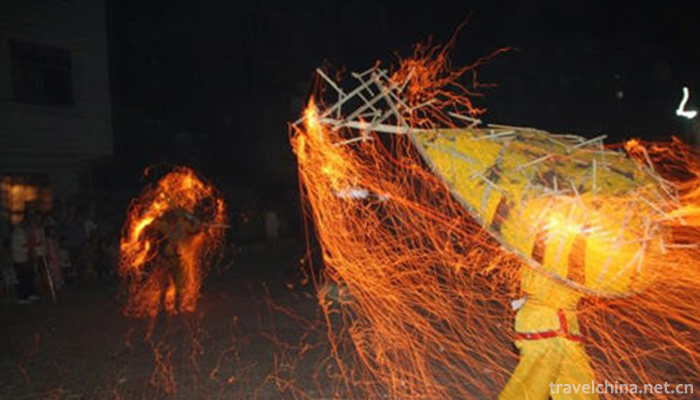
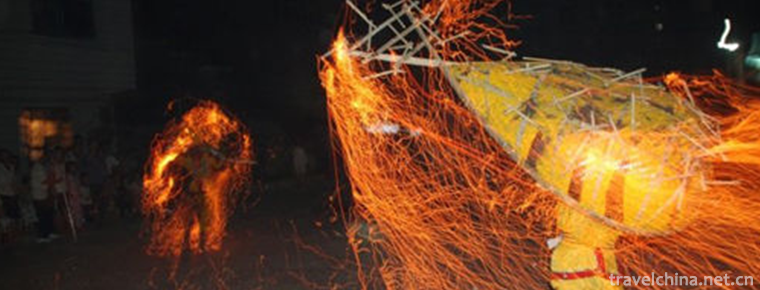
Fire tiger
-
Altai mountains
The Altai mountains are located in the northern part of the Xinjiang Uygur Autonomous Region and the western part of Mongolia. Northwest extends to Russia
Views: 153 Time 2018-11-01 -
Terracotta Army
Terracotta Warriors and Horses, terracotta warriors and horses of Qin Shihuang, also referred to as terracotta warriors and horses or terracotta warriors and horses of Qin Dynasty
Views: 210 Time 2018-11-11 -
Mao tofu Fried bean curd
Mao tofu Fried bean curd is a famous traditional dish in Huizhou, Anhui Province, and is well known for its vegetarian delicacies at home and abroad.
Views: 248 Time 2018-11-27 -
Zhanqiao
Qingdao Trestle Bridge is one of the scenic spots of Qingdao Seaside Scenic Spot. It is the first national scenic spot announced by the State Council in 1982, and also the first national AAAA-level sc
Views: 158 Time 2019-03-09 -
Landscape Architecture in Yangzhou
Yangzhou gardens began in the Western Han Dynasty, flourished in the Sui and Tang Dynasties, matured in the Song and Ming Dynasties, and flourished in the Qianlong Period of the Qing Dynasty.
Views: 170 Time 2019-04-21 -
Four Scenic Car Race
Duyuan Sijing Car Race is a folk activity in Pingshun County, Shanxi Province. In May 2011, Pingshun County, Shanxi Province declared the "Four Scenic Car Race
Views: 370 Time 2019-04-28 -
Liaoning wind and percussion ensemble
Liaoning drum music, commonly known as drum music. It is one of the traditional folk instrumental music in China. Liaoning drum music is divided into Suona music and Sheng wind music, and according to
Views: 310 Time 2019-05-13 -
Ningbo Gold and Silver Embroidery
Ningbo gold and silver embroidery is one of the Han folk handicraft products embroidered on silk fabrics with various color threads, gold threads and silver threads. With its strong local characterist
Views: 178 Time 2019-06-07 -
Shuizu Duanwu Jie
The aquarium duanjie is called "borrowing duanjie" in the language of water. "Duan" means "the first year of life" or "New Year", "borrow" means "
Views: 195 Time 2019-06-16 -
Weaving and Dyeing Techniques of Uygur Felts and Printed Fabrics
Uygur felt, printing and dyeing technology, Xinjiang Uygur Autonomous Region Turpan (now Turpan) local traditional skills, one of the national intangible cultural heritage.
Views: 326 Time 2019-06-26 -
Beijing Normal University
Beijing Normal University is a key university directly under the Ministry of education. It is a famous university characterized by teacher education, educational science and liberal arts basic subject
Views: 192 Time 2019-09-06 -
A city with a fire by one Cold thinking behind Ding Zhen hot
With the popularity of microblogging for nearly seven months, the popularity of microblogging has been created for a long time. At the same time, the hometown of Ding Zhen, Litang County, Ganzi Tibetan Autonomous Prefecture, also ushered in several times the search volume and real gold and silver tourism orders.
Views: 99 Time 2020-12-07

